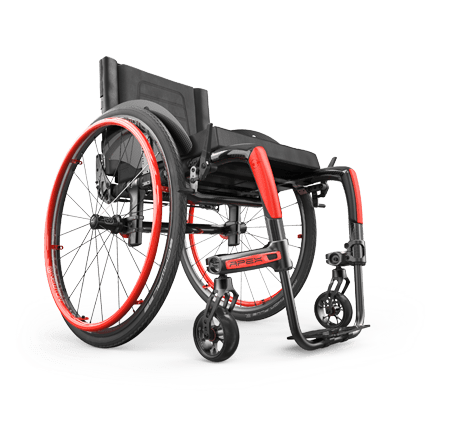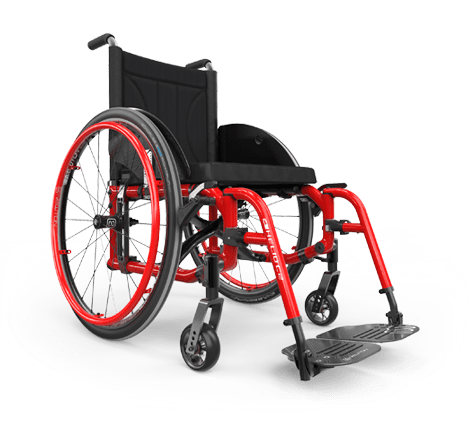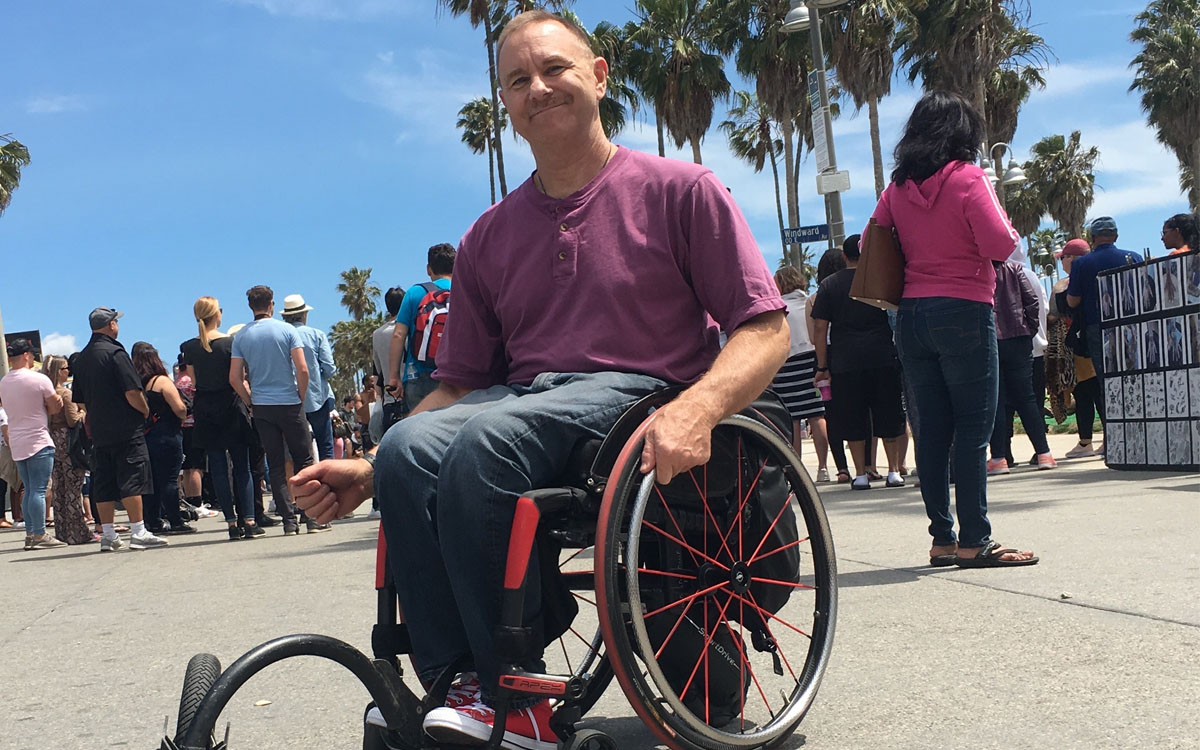(If you haven't, make sure to also read Part I & Part III of "Tips I've Learned in 36 Years as a Wheeler" Series by Bob Vogel).
SEAT ANGLE
Let’s talk about proper seat angle. This is how much lower the back of the seat is compared to the front (also known as seat slope, seat bucket, or seat dump).
The correct amount of seat angle is unique to each person. In general, you want enough seat angle that your butt doesn’t slide forward in your chair because that may cause shearing forces that can lead to a deep tissue injury. Learn more about Deep Tissue Pressure Sores here.
In addition to keeping your butt in place, seat angle can help with forward balance. When I got my first chair, I started out with 1″ of seat bucket. I found it wasn’t enough because when I was really pushing in my chair, my butt would slide forward. I slowly increased mine until I reached 2 ½” of bucket, which for me was and still is the perfect amount for staying set in my chair, yet I am still able to reach objects around the house.
Like finding the right center of gravity, described in my previous blog, getting the correct seat angle for you may take a bit of fine tuning, but it is worth it.
Now let’s take a look at cushions.
THE IMPORTANCE OF PRESSURE MAPPING AND A MIRROR-CHECK
One of the benefits of having so many roles in the DME industry is I’ve had the opportunity to try a wide variety of cushion makes, models, and designs. In addition, a friend who was a therapist at a local rehab center would let me drop by the seating clinic to get pressure mapped when I had a new cushion I wanted to demo. A pressure map is a pad with sensors that lays on top of a cushion and provides live feedback of pressure areas on a computer screen when you sit on the cushion. It allows you to see areas with less pressure in blue, and areas with more pressure in red. You will see in real time how dramatically a minor movement or shift can change and offload pressure. I did this 25 years ago and it helped reinforce easy habits of weight shifting. Pressure mapping is a fantastic way to get a glimpse of how well a cushion is distributing your weight, however, in my experience it is only one tool, and not the “final say”.
When I was in rehab, it was drummed into me to do a full butt check with a mirror every night and morning. Whenever I get a new cushion, even if it is the same manufacturer and model, I will sit on it for 15–30 minutes and do a mirror check, followed by another hour of sitting and a second mirror check. This practice has enabled me to dodge potential pressure ulcers (injuries).
I learned this practice after I had an incident when I was given a new make and model cushion to demo. The new cushion pressure mapped as well as the cushion I had been using for several years. It was lighter and required less maintenance, so I sat on the new one for the rest of the day. That night, my mirror skin-check revealed skin that was bright red and warm to the touch. An hour later it was pink and still warm. Fortunately, by morning, everything had returned to normal, and I returned to my previous cushion.
The three lessons I learned are:
- The importance of a mirror-skin check.
- The “best cushion” is something that is going to be unique to each person.
- Do a mirror skin-check whenever trying a new cushion!
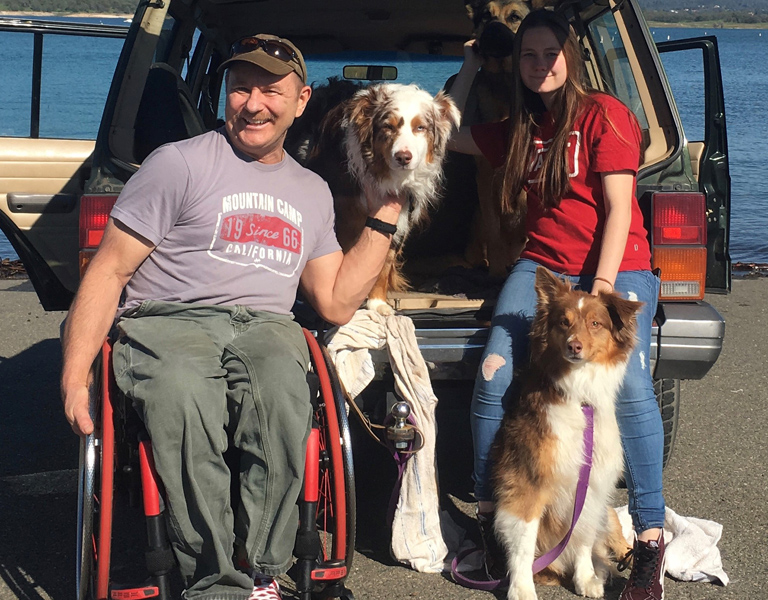
Bob Vogel using his Apex C with his daughter Sarah and their dogs Nikko, Saddie (Australian Shepherds) and Killy (A German Shepherd and Bob's service dog).
GETTING A NEW CUSHION: HOW OFTEN?
Every make and model of cushion has a finite lifespan, and at some point, will no longer support and protect your skin the way it was designed. It is important to replace your cushion prior to this occurring.
How often insurance will pay for a new cushion tends to be a moving target, but in general, the industry follows Medicare’s guideline of every 5-years. To get a new cushion through insurance, you will need to get an evaluation from a clinician at a seating clinic—something I recommend even when paying cash. Getting into a seating clinic can be initiated from your primary care doc or by contacting your local DME dealer. Since it tends to be a lengthy process, it is a good idea to get the ball rolling early.
Caveat: If your cushion becomes damaged or a mirror-skin-check reveals your cushion isn’t protecting your skin the way it should, it is vital to contact your doctor right away to get a seating evaluation. Going this route should provide the proper documentation to replace or switch to a more supportive model prior to the 5-year mark.
QUESTIONS TO ASK AT A SEATING CLINIC
Here is a list of things that are important to think about when considering cushion options and to ask the clinician and/ATP at the seating clinic:
- Is the cushion waterproof? I make it a habit to wash my cushion cover once a week, and I clean my cushion with a warm water spray every few weeks.
- Is the cushion-cover stretchable? A fabric’s stretch characteristics, especially 4-way stretch, provide better immersion in the cushion, which helps offload pressure.
- Is the cushion-cover breathable? Breathability helps reduce heat and moisture, which are contributors to potential pressure ulcers. Learn more about the basics of cushion back support covers here.
- Do your legs splay apart on your current cushion? More importantly, do they splay apart on the cushion you are trying? If yes, a combination of proper footrest height and cushion contour can keep the legs in proper alignment. Addressing splaying legs is a big deal for me as I find when my legs splay out, it is esthetically unappealing, things roll off my lap, and most concerning of all, this can cause the lower legs to lean against the inside of the chair frame, creating a pressure area.
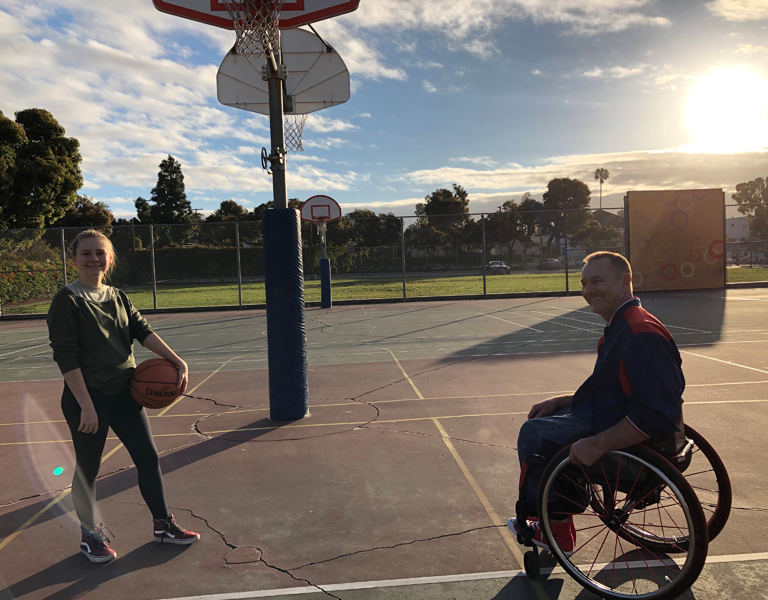
Bob Vogel pplaying basketball with his daughter Sarah.
USES FOR YOUR OLD CUSHION AND SEATING HACKS
I’m fortunate that I have several old cushions that are still in good shape, and they are put to good use. One is for back-up, and I have another cushion on the seat of my car - something I recommend as I won’t risk a pressure injury from sitting on a car seat. When traveling, it is important to avoid sitting on hard surfaces. For flying, I put my cushion on the airplane seat prior to transfer. Similarly, anticipating all transfer surfaces and utilizing towels or common items to provide padding can be helpful.




